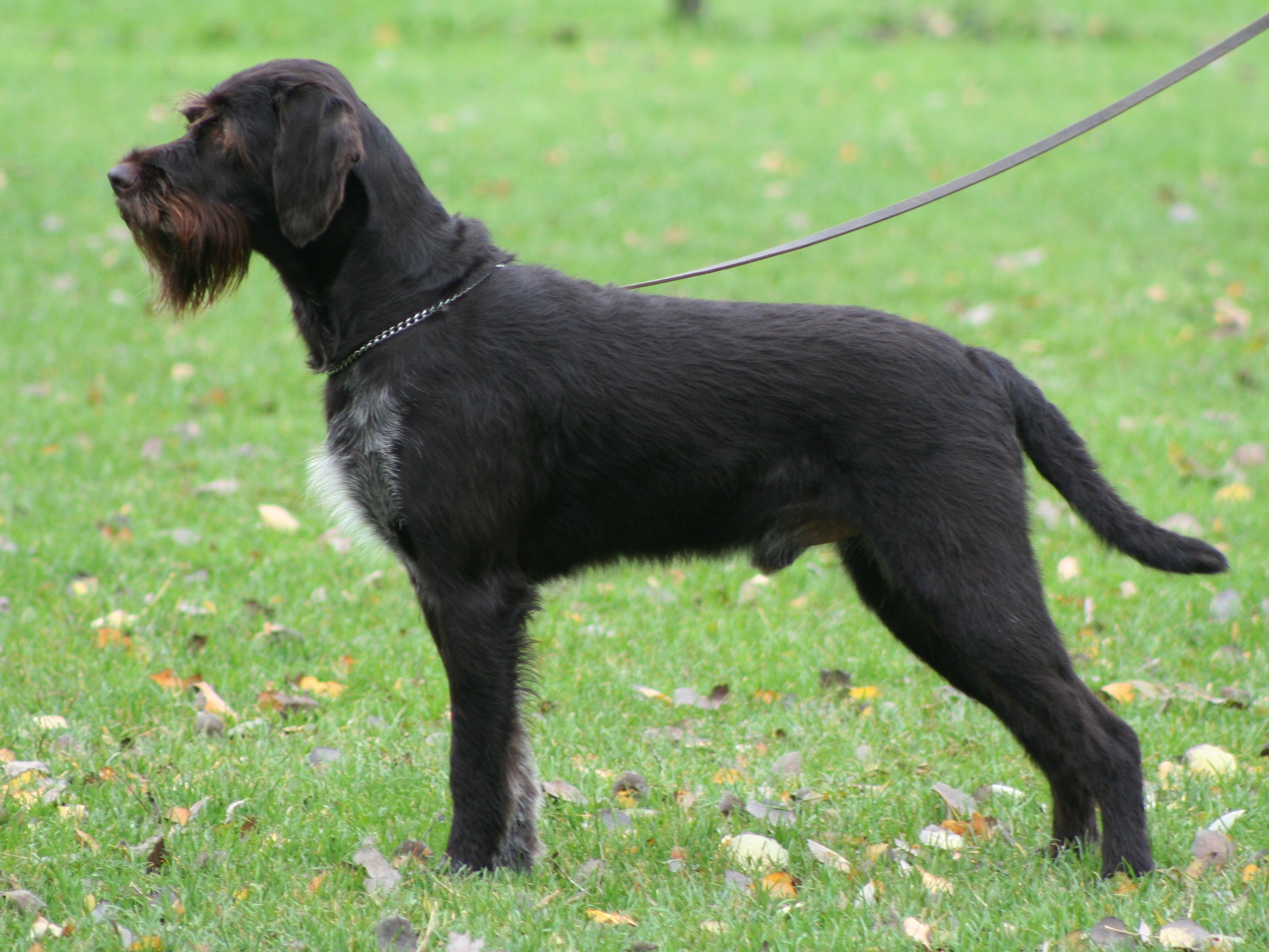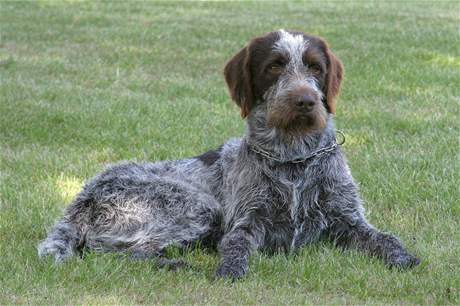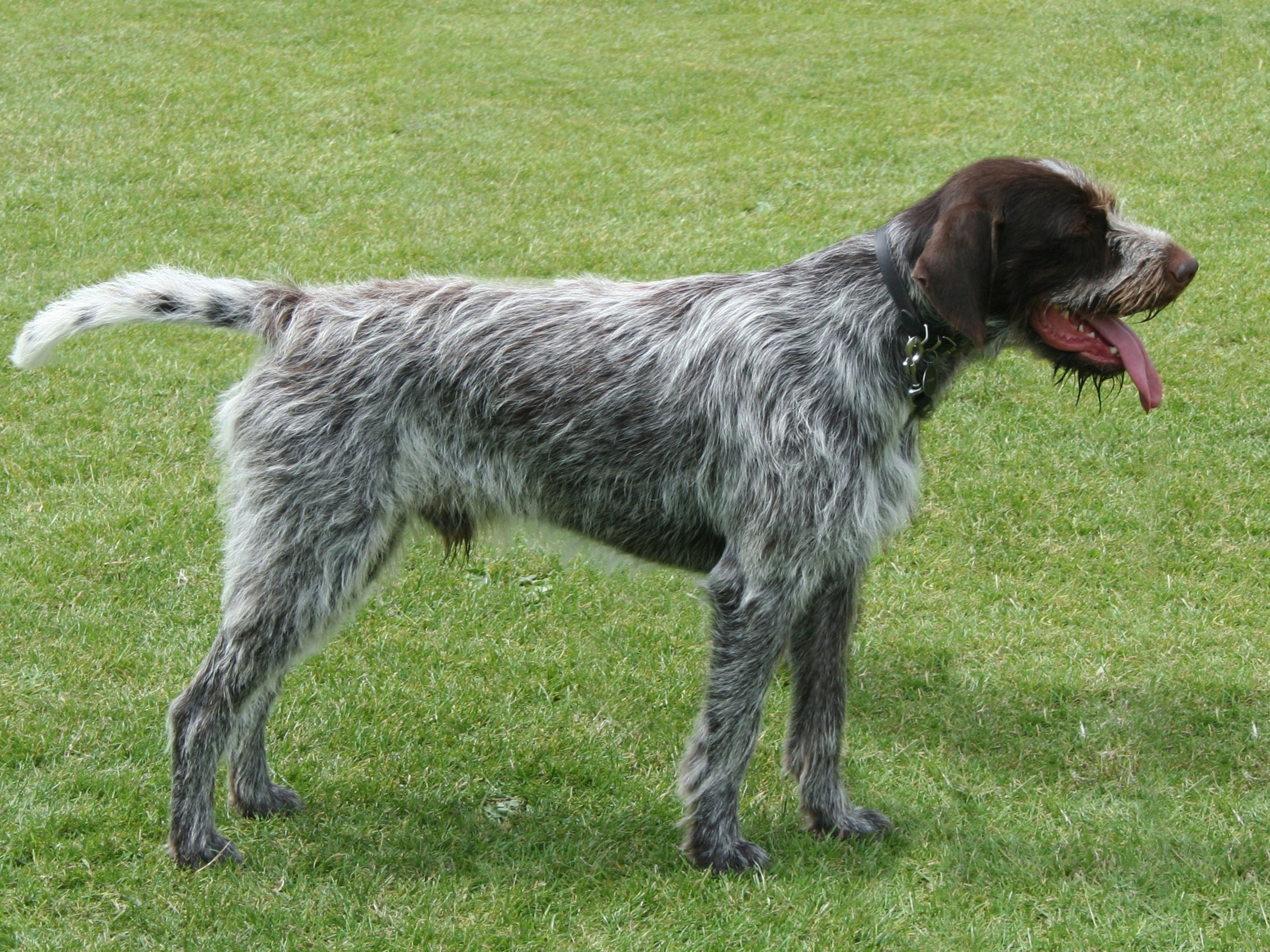Cesky Fousek
- Group 7: Pointers
- Section 1: Continental Pointing Dogs
- With working trial
Previously, Czechoslovakia, now Czech Republic.
Male: 60-66 cm Female: 58-62 cm
Male: 28-34 kg Female: 22-28 kg
The Český fousek ( Bohemian rough beard) is recognized by the FCI breed of dog from the Czech Republic ( FCI Group 7, Section 1.3, Standard No. 245).
Origin and History
Its oldest known record of a Bohemian Hound from 1348; these documents are kept at the castle Karlstejn. Whether it was a pointer on the dog, is not known. Only in later documents it is referred to as " canis boehmicus ", ie Bohemian hound. In the 16th and 17th century, the Czech hounds in Central Europe seem to have been very popular. A first unambiguous assignment can be found only in the 1882 published work Myslivost ( hunting ) by J. Černý. The recognition began in 1881 with the founding of the Association for the breeding and training of hunting dogs, the first breed standard is from 1882. 1886 in Pisek founded the club to promote the Bohemian pointing dog and the name Cesky Fousek set.
Until the First World War was the Bohemian wire-haired pointing dog fousek the most common in the area of Bohemia. After the race had been decimated by the next war, the lovers began in the 1920s to rebuild it. For this, the few remaining copies of the Bohemian roughness Barts were wire-haired pointers and Griffons crossed to obtain what is now known, modern breed of Český fousek. Only in 1958, cross-breeding with other breeds has been set.
Currently, the race takes in the breeding numbers for hunting dogs in their country of origin again a second place. It enjoys in Central Europe becoming increasingly popular. In Austria, Germany and Switzerland there are owners, breeders and breed clubs of Český fousek.
Description
With up to 63 cm, it is a medium sized, rauhaariger hunting dog that is well adapted to the climate in the mountains. The coat colors are dark mold with or without brown patches, brown with mottled markings on the front chest and the lower limbs or brown without any further badge. The short, soft hair -covered ears are set high and wide, slightly rounded at the end and are well on the head. The tail is moderately strong optical extension of the topline. He received his German name from the typical beard, because of the lower jaw and at the lips is longer and softer hair. The forehead, the skull and the jaws are covered with a short and coarse hair.
Use
It is universally suitable for field, water and forest work. He has varminty, but is still easy to carry and his handler and his family very fond of.










